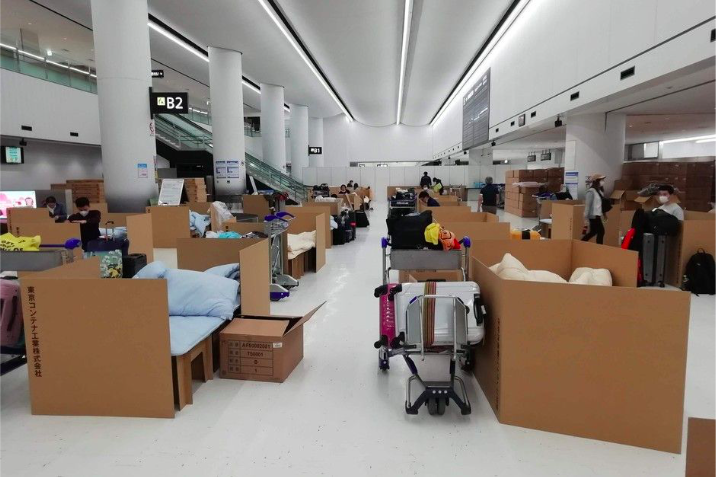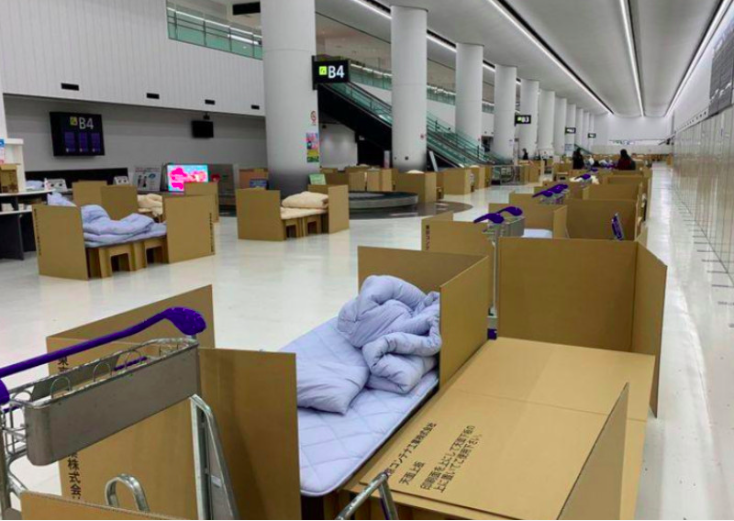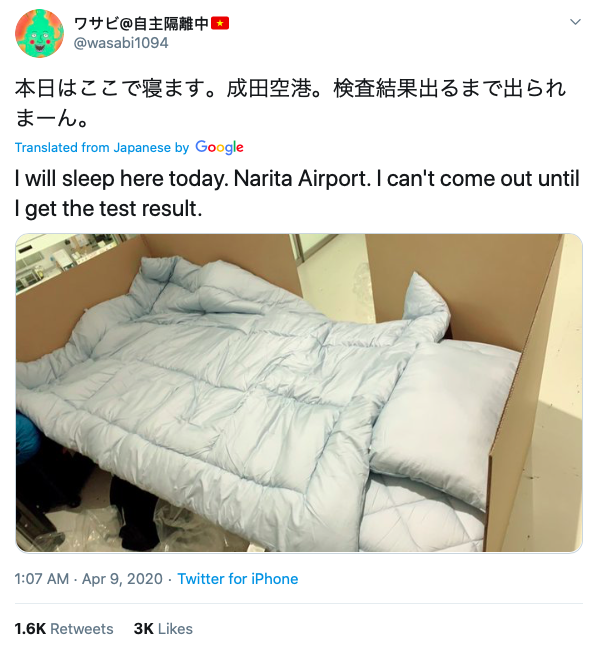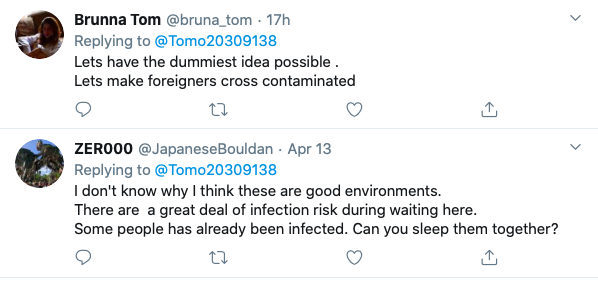日本架設「紙箱旅館」 眾人驚呼:是要交互傳染嗎?

Narita Airport’s makeshift ‘cardboard hotel’ for travelers (Photo courtesy of AP)
【看英文中國郵報學英文】雖然日本於上週宣布進入緊急狀態,近期依舊有許多航班飛入境內,成田機場為此在機場的行李領取處架設了暫時性的「紙箱飯店」,供等待檢疫結果報告的旅客休息。
With flights still going in and out of Narita Airport, Japanese authorities have set up cardboard beds with mattresses and blankets for travelers who are waiting for the results of their COVID-19 tests.

根據國際媒體報導,一名衛生局官員表示通常檢測結果六小時內就會出爐,然而因為近期返國旅客可能會增多,恐造成延誤,旅客可能需要一、兩天後才能得到檢測結果。
According to foreign media, a Health Ministry official revealed that the results can come in six hours, though the influx of passengers has caused delays, meaning that it can take up to one or two days before you receive the results.

猶如台灣,日本近日也禁止入境的旅客搭乘大眾交通運輸工具回家,亦代表沒有他人接送的乘客需要在附近的過境旅館休息或是在機場內等待。
As with Taiwan, Japan has restricted travelers from taking public transportation systems, so those without a ride are forced to wait it out at the airport.
那名官員補充,紙箱旅館是以防萬一機場附近的旅社被住滿無空房。
The unnamed official said that the cardboard boxes are provided in case facilities near the airport are full.
這暫時性的歇息處飽受網友的批判,許多人指出在結果還沒出來的情況下,旅客如此近距離的休息可能反而造成更大規模的感染。
The makeshift rest-areas were scorned by netizens as many were concerned of the possibility of cross-contamination because of the proximity between the beds.

根據NHK數據,截至今日下午,日本已有超過8,000確診案例,和162死亡案例。
As of press time, national broadcaster NHK has reported that Japan has more than 8,000 confirmed COVID-19 cases, with 162 deaths.
更多 ChinaPost 新聞
新增2例確診 華航毒班機確診達12人 | Taiwan reports 2 new infections, brings tally to 395
防疫趴被網轟 近看發現魔鬼藏在細節裡|The devil’s in the details: ‘Isolation Party’ criticized until closer inspection
台灣國旗登上WHO網頁!成大「超神研發」曝光 眾全讚翻 | Brilliant invention brings Taiwan flag on WHO website

 Yahoo奇摩新聞
Yahoo奇摩新聞 